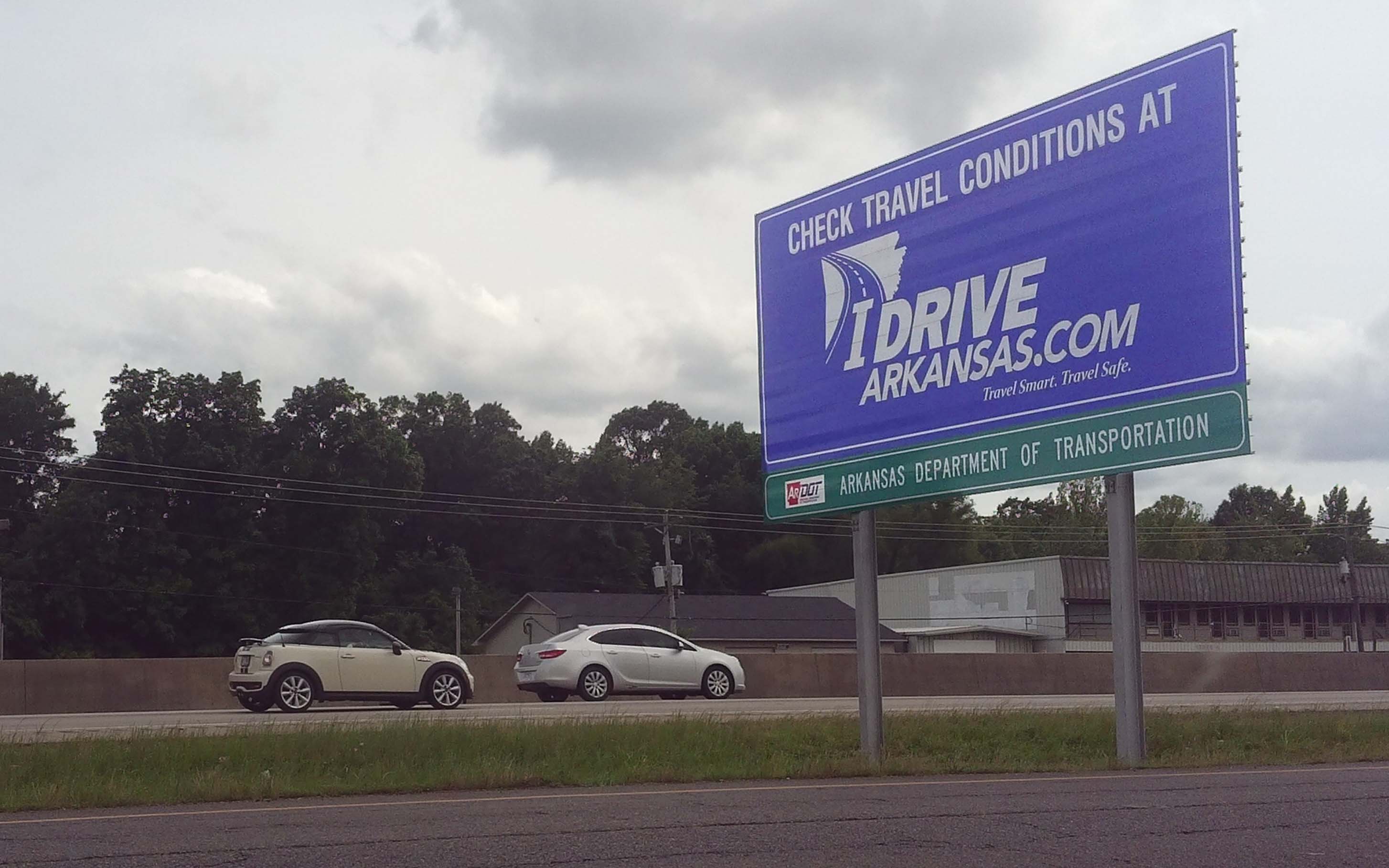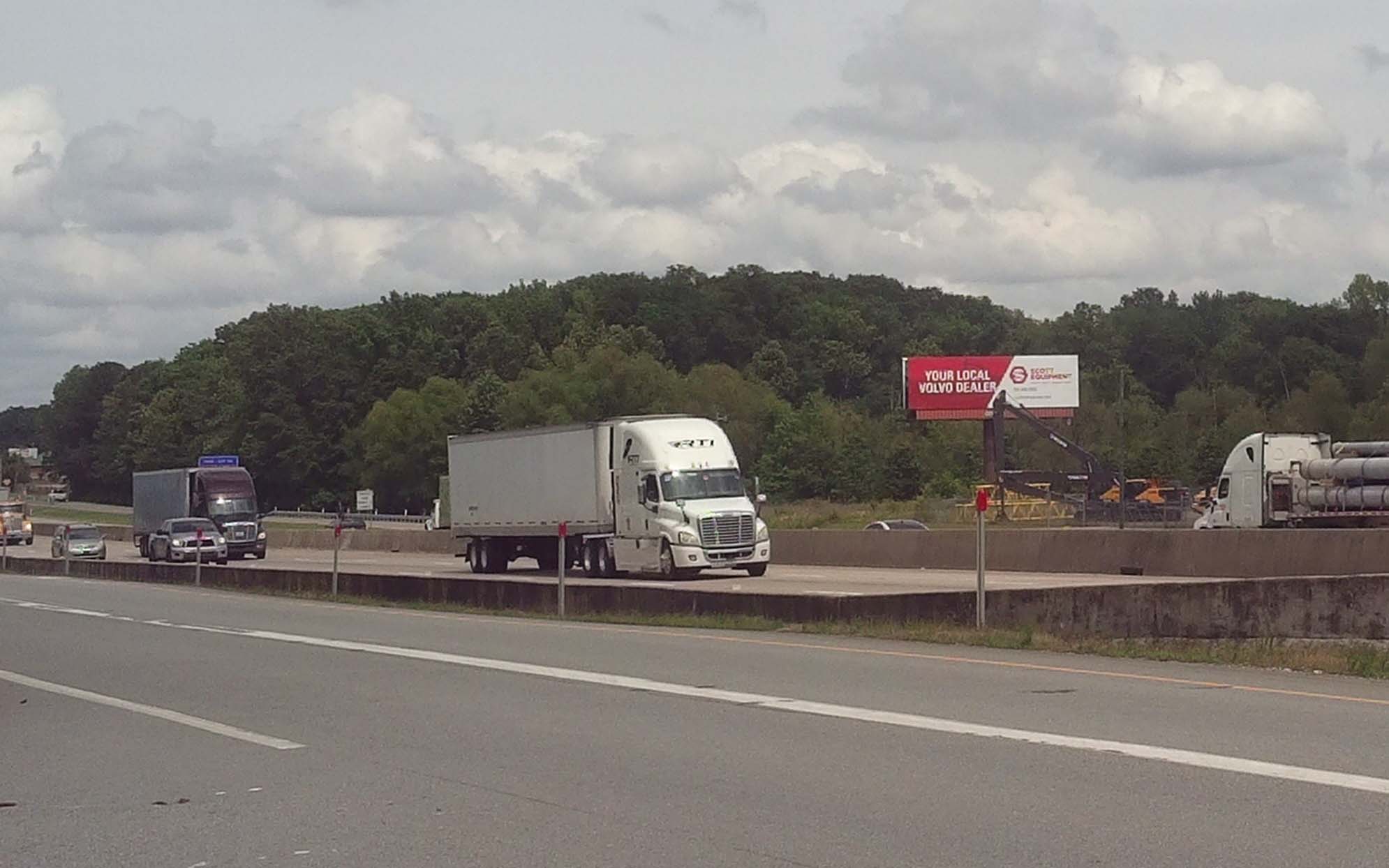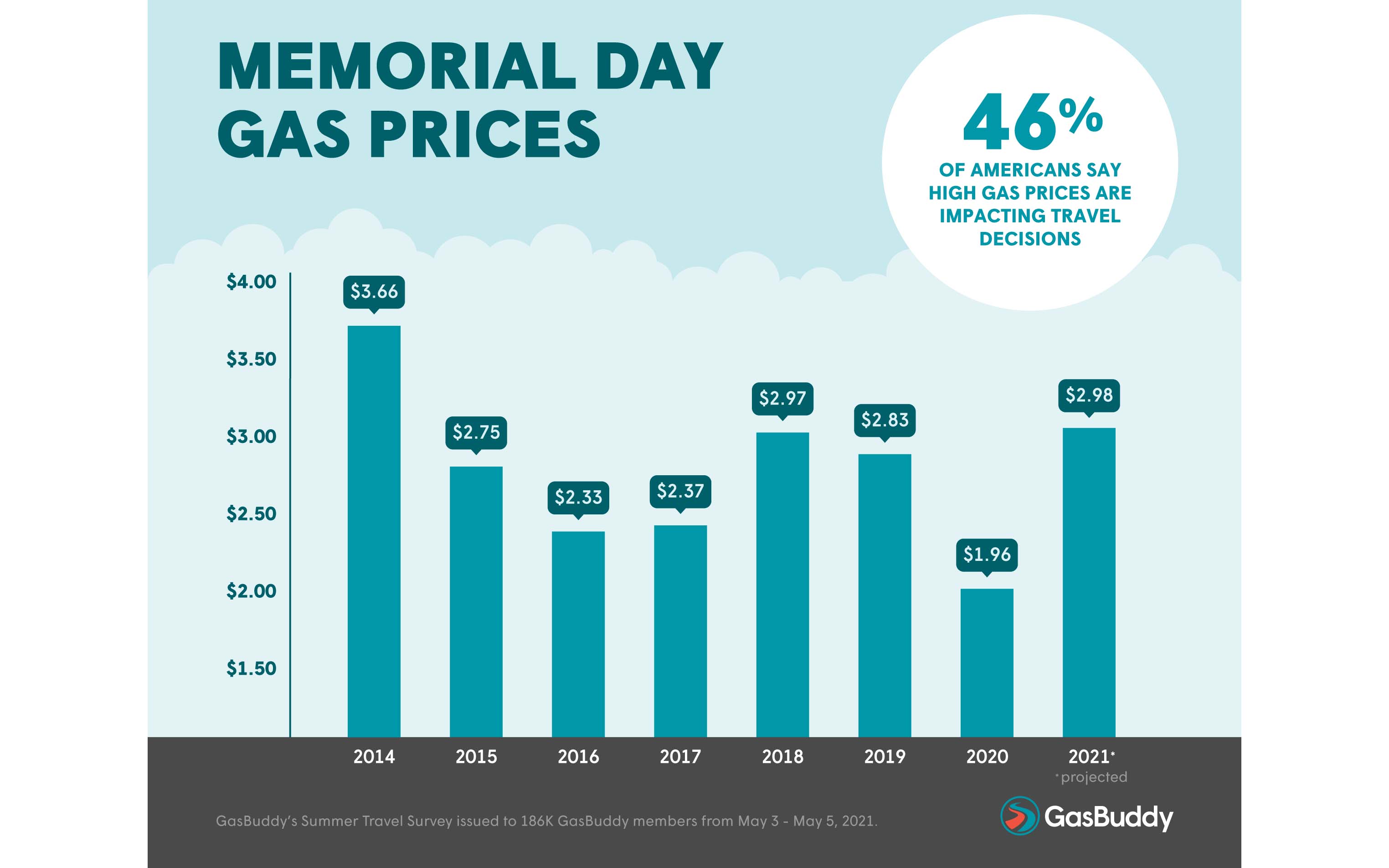Arkansan motorists, vacationers should expect crowded highways, high gas prices during Memorial Day travel
May 24-30, 2021
By Wesley Brown
As the nation looks ahead to the traditional start of the summer vacation season this Memorial Day weekend, millions of Americans are planning to take to the roads and the friendly skies after a long year of isolation and social distancing.
In its annual Memorial Day holiday forecast, AAA forecasts a significant rebound in the number of Americans planning to travel this Memorial Day holiday weekend. From May 27 through May 31, more than 37 million people are expected to travel 50 miles or more from home, an increase of 60% from last year when only 23 million traveled, the lowest on record since AAA began recording in 2000.
The expected strong increase in demand from last year’s holiday, which fell during the early phase of the pandemic, still represents 13% – or nearly 6 million – fewer travelers than in 2019. AAA urges those who choose to travel this year to exercise caution and take measures to protect themselves and others as the pandemic continues.
“As more people get the COVID-19 vaccine and consumer confidence grows, Americans are demonstrating a strong desire to travel this Memorial Day,” said Paula Twidale, senior vice president, AAA Travel. “This pent-up demand will result in a significant increase in Memorial Day travel, which is a strong indicator for summer, though we must all remember to continue taking important safety precautions.”
AAA notes that the actual number of holiday travelers could fluctuate as we approach Memorial Day. If there is an increase in reported cases attributed to new COVID-19 variants, some people may decide to stay home, while others may note the strong progress in vaccinations and make last-minute decisions to travel.
Natural State travel rebound
In anticipation of the summer travel period, the Arkansas Tourism Department celebrated National Travel and Tourism Week on May 2-8 to spotlight the critical role travel plays in driving economic recovery efforts post-COVID. Across the nation, the tourism and hospitality industries united around the theme, “Power of Travel.”
In Arkansas, local communities and state welcome centers hosted giveaways and small events to celebrate travel and its impact on the state’s economy.
“Despite the hardships of the past year, Arkansas is ready and eager to welcome back visitors and help drive the state’s recovery efforts,” said Stacy Hurst, secretary of the Arkansas Department of Parks, Heritage and Tourism. “(This) is an opportunity to remind visitors and Arkansans alike of the incredible contributions of the travel industry, not just to our local economy and workforce, but to our community’s identity and culture.”
“The travel industry in Arkansas and across the globe has been hit hard over the past year. The good news is we’re now able to celebrate recovery, and travelers are out and about exploring The Natural State. We’re more than ready to welcome them back with open arms,” added Travis Napper, director of Arkansas Tourism.
Another factor contributing to the expected spike in Memorial Day holiday travel is the Centers for Disease Control and Prevention (CDC), Transportation Security Administration (TSA), and the U.S. Department of Transportation updated guidance on May 14 that fully vaccinated people are safe now to travel and move about the country.
However, that guidance also included a reminder that all travelers are still required to wear a mask on planes, buses, trains, and other forms of public transportation traveling into, within, or out of the U.S., including at transportation hubs such as airports and stations.
In a statement in support of the federal guidance, the Airlines for America (A4A) trade group said U.S. airlines will continue to work with the TSA and DOT’s Federal Aviation Administration to “vigorously enforce” the federal mask mandate at airports and while traveling on airlines.
“The safety and wellbeing of passengers and employees is always the top priority of the U.S. airlines. Face coverings are a critical measure in our multi-layered approach to protecting the traveling public, which is why U.S. airlines have been vigorously enforcing face covering requirements since April 2020. The federal mask mandate is an additional layer of support, which strengthens our flight crews’ ability to enforce face covering requirements for the duration of the pandemic,” the nation’s largest airline industry trade group.
A4A members include Alaska Airlines, American Airlines, Atlas Air, Delta Air Lines, FedEx, Hawaiian Airlines, JetBlue Airways, Southwest Airlines, United Airlines and UPS. In an August update on the economic impact of COVID-19, A4A reported that weekly passenger volume for U.S. airlines was 70% below year ago levels. That downturn caused domestic and international departures for U.S. airlines to decline 47% from a year ago and forced U.S. airlines to mothball more than 2000 planes, or 20% of the U.S. fleet, A4A officials said,
In late April 2020, the Treasury Department reached agreements with several U.S. airlines to provide discretionary CARES Act loans totaling $25 billion under the Payroll Support Program. Those emergency COVID-19 relief funds kept thousands of airline workers employed after most of the nation’s carriers were grounded in the spring by social distancing and stay-and-home orders.
As the economy bounces back, leaders of 23 global travel companies sent a letter to President Joe Biden on May 12 urging greater progress toward reopening international travel. Members of the U.S. Travel Association (USTA) also warned the president of dire economic consequences if U.S. borders remain closed to travel.
“While U.S. borders remain closed to much of the world, the remarkable scientific advancements to combat the COVID-19 pandemic and the tremendous vaccine deployment achieved by your administration have allowed the safe resumption of many activities,” the letter reads. “For all its economic and cultural contributions, international travel should be among them and it will hasten the economic recovery we all desire.”
The USTA letter also urges the establishment of a public-private taskforce by the end of May to develop a risk-based, data-driven roadmap for safely reopening international travel to the U.S. USTA officials said the steep declines in international travel in 2020 resulted in the loss of $150 billion in U.S. export income and 1.1 million domestic jobs. If nothing is done to lift entry restrictions, the U.S. is projected to lose an additional $175 billion by the end of this year, they said.
Highway gridlock, high gas prices & inflation
Closer to home, Arkansas motorists and vacationers traveling through the state will still have to deal with possible traffic gridlocks across the state. Northeast Arkansas roads is expected to face the biggest logjam as motorist look to reroute I-40 between Little Rock and Memphis following closure of the Hernando Desoto Mississippi River bridge at the Tennessee-Arkansas state line on May 11. (See other feature "Gov. Hutchinson calls for swift but safe repair of I-40 bridge after failed inspection").
Locally, ongoing construction of the controversial I-30 Crossing project in downtown Little Rock is also expected to logjam traffic across the region during the three-day holiday. Construction on the 6.7-mile section of the interstate through downtown Little Rock and North Little Rock, is expected to be completed by late 2024 or early 2025, is already tying up a large swath of interstate across the Arkansas River.
The Pulaski County project is one of 36 construction projects in ARDOT’s $1.8 billion Connecting Arkansas Program (CAP), the largest highway construction program ever undertaken by ARDOT. In 2012, through a voter-approved constitutional amendment, the people of Arkansas passed a 10-year, half-cent sales tax to improve the state’s intermodal transportation system, including projects that widen and improve approximately 200 miles of highways and interstates.
Other CAP projects include a 5.4 mile, six-lane widening of 1-30 in Saline County that requires the temporary closure of the southbound lane this summer and occasional overnight stoppages of traffic on the frontage roads near the South Street bridge in Benton. That project is not expected to complete until late 2022.
Meanwhile, AAA and GasBuddy.com both noted that motorists deciding to take a Memorial Day vacation will also see the highest gas prices in six years. According to AAA, the average pump prices nationally is now at $3.04 for a gallon of regular unleaded after a cyberattack on the Colonial Pipeline in early May caused prices to spike weeks ahead of the holiday.
According to GasBuddy’s annual summer travel survey, many Americans are conflicted about summer travel this year. With more people vaccinated and the economy opening, 57% of Americans plan to take at least one road trip this summer, up substantially from 2020’s 31%, the survey says. Forty-six percent surveyed say that high gas prices are directly impacting their travel plans compared to only 4% saying so in 2020.
As noted, the cyberattack on the Colonial Pipeline that ended after the nation’s largest fuel products transporters that delivers 45% of the gasoline supply to the Southeast paid a $5 million ransom. The six-day shut down caused massive panic and fuel shortages that sent pump prices well over the $3 a gallon mark but not enough to keep pandemic-weary people off the road.
“The numbers are clear: people are itching to travel as the nation recovers from COVID-19 but are frustrated with some of the highest holiday weekend gas prices in quite some time,” said Patrick De Haan, head of petroleum analysis at GasBuddy. “Gas prices have been increasing for months due to the continued rise in gasoline demand as a myriad of destinations reopen ahead of the summer driving season.
“The Colonial Pipeline shutdown only highlighted how much more reliant consumers have become on gasoline since the pandemic hit. Drivers don’t need to worry too much though, as there is an end in sight. Prices should ease up ahead of the holiday, mainly in areas where the pipeline challenges were most severe. Be warned that a rebound may happen as we approach midsummer, should gasoline demand rise to near-record levels,” said De Haan.
Nationally, AAA weekly gas gauge shows the national average jumped eight cents since the Colonial shutdown. States like Georgia, North Carolina and South Carolina, where the gasoline supply was strained due to the pipeline shutdown, saw prices jump as much as 21 cents. With the pipeline back in operation and supply being restored, gas prices in these states and the national average have since stabilized.
“The (U.S.) Southeast will continue to experience tight supply this week as terminals and gas stations are refueled,” said Jeanette McGee, AAA spokesperson.
In Arkansas, although the Natural State is still among the 10 states with the cheapest gasoline, prices still jumped six cents this week to an average of $2.76 per gallon. That compares to prices for regular unleaded a month ago at $2.67 per gallon and $1.51 per gallon a year ago.
As retailers’ ramp for Memorial Day, motorists are already seeing a wide range of pump prices in key markets across the state, AAA data shows. For example, drivers in Hot Springs and the Little Rock-North Little Rock metro area are seeing the cheapest gasoline at $2.70 and $2.72 per gallon, respectively. However, motorists in Jonesboro and Texarkana are seeing the highest prices on average to fill up their tanks, shelling out $2.81 and $2.83, respectively, for a gallon of gasoline.
In addition, travel amenities such as rental cars, hotel rooms, and airline fares are soaring as demand outstrips supply. On May 12, the U.S. Bureau of Labor Statistics (BLS) reported that the Consumer Price Index increased 0.8% in April. Over the last 12 months, the “all items” index spike 4.2%, the largest 12-month upswing since the Great Recession.
The index for all items less food and energy also rose 3% over the past 12 months, the largest yearly surge since January 1996. Among the key items that impacts travel costs were large 12-month increases for used cars and trucks and airline fares at 21% and 9.6%, respectively. After the pandemic halted new car production for nearly two months, the high demand and supply of is driving up used car prices, which has also led car rental rates to skyrocket over 300% in Central Arkansas.
“This is going to be an expensive summer for motorists. However, we do not expect it to deter travelers from hitting the road,” said McGee.
Arkansas motorists and out-of-state travelers can find additional information on state highway conditions and construction zones during the Memorial Day weekend at IDriveArkansas.com or ARDOT.gov.
PHOTO CAPTIONS:
1A/1B. On the road again: Arkansas travelers look to shake-off COVID-19 daze. Arkansans ready to travel as upcoming Memorial Day weekend kicks off start of summer vacation season. (Photos provided by Arkansas Department of Parks and Tourism)
2. Drivers should be cautious of traffic tie-ups at numerous construction zones across the Natural State while traveling during the four-day Memorial Day weekend, state highway officials say. The I-30 Crossing project on the Arkansas River in downtown Little Rock and several other large highway upgrades across the state are part of ARDOT’s $1.8 billion Connecting Arkansas Program (CAP), the largest highway construction program in state history. (Photo by Daily Record staff)
3. In their annual Memorial Day holiday forecast, the American Automobile Association (AAA) predicts more than 37 million people are expected to travel 50 miles or more from home during the traditional start to the nation's summer vacation season. (Photo by Daily Record staff)







